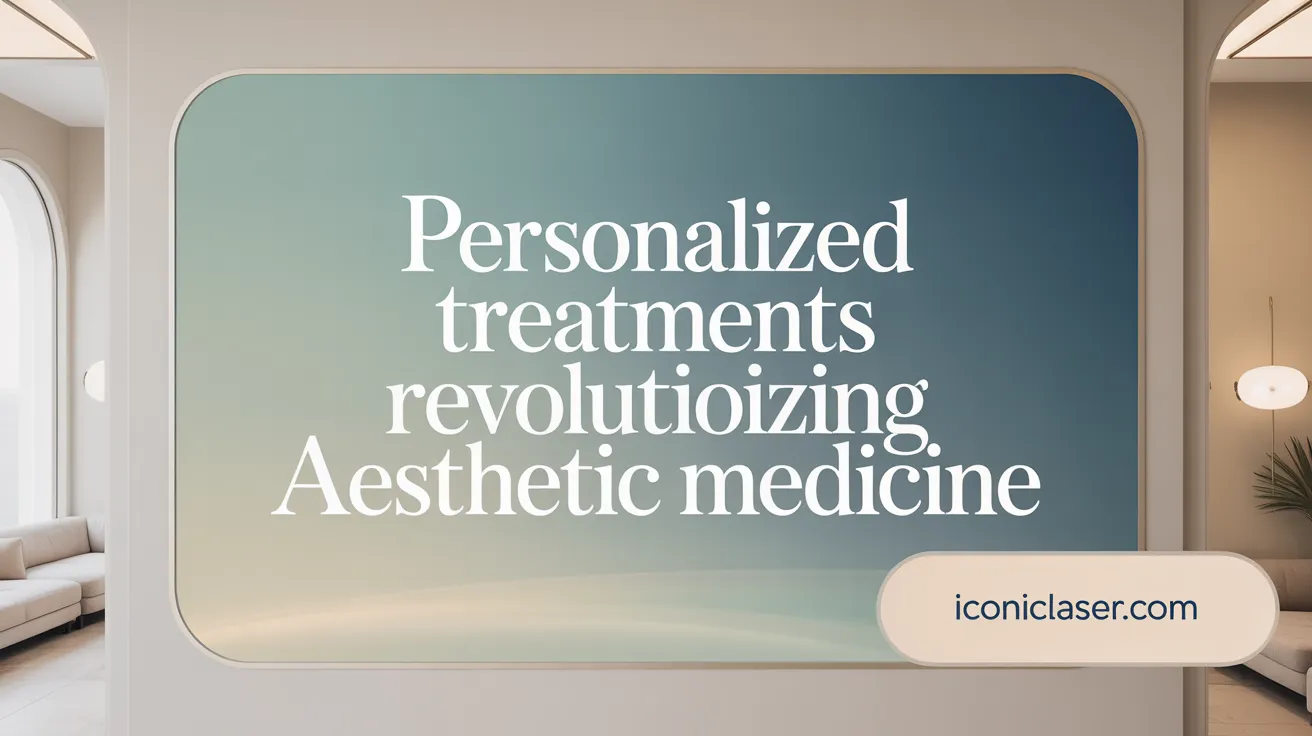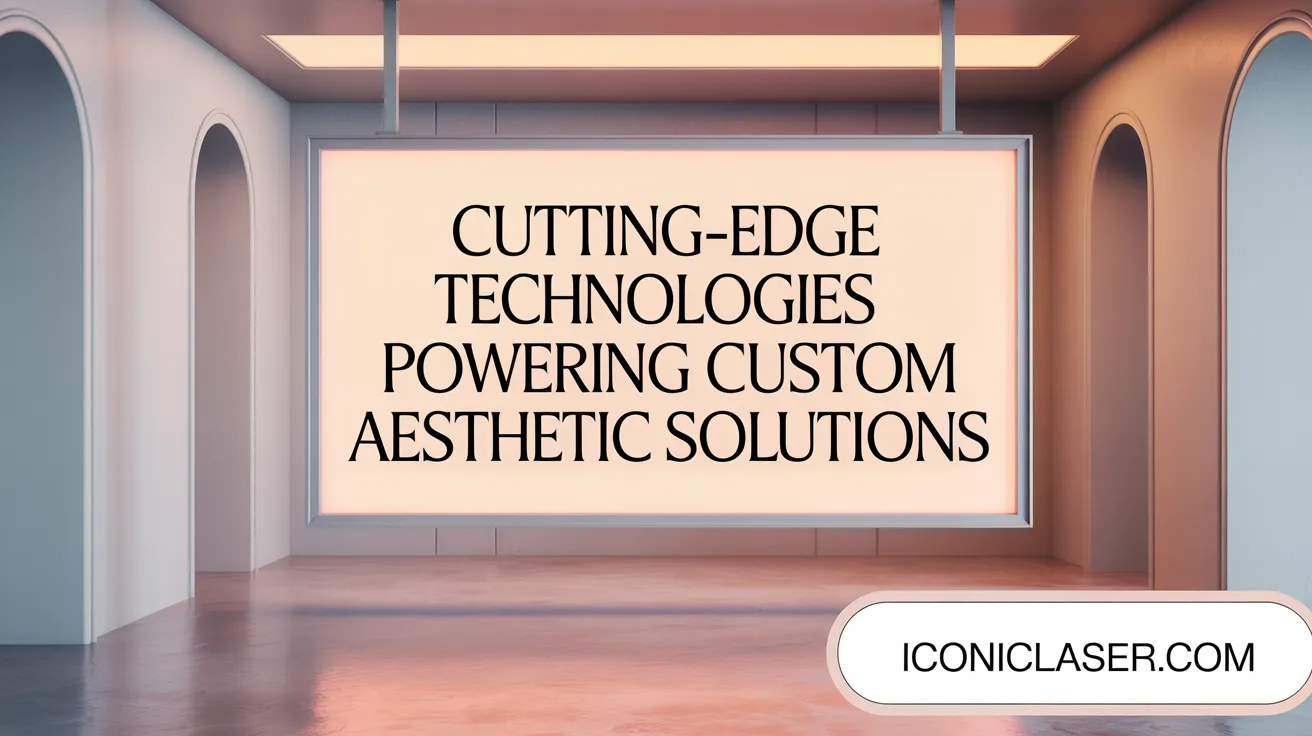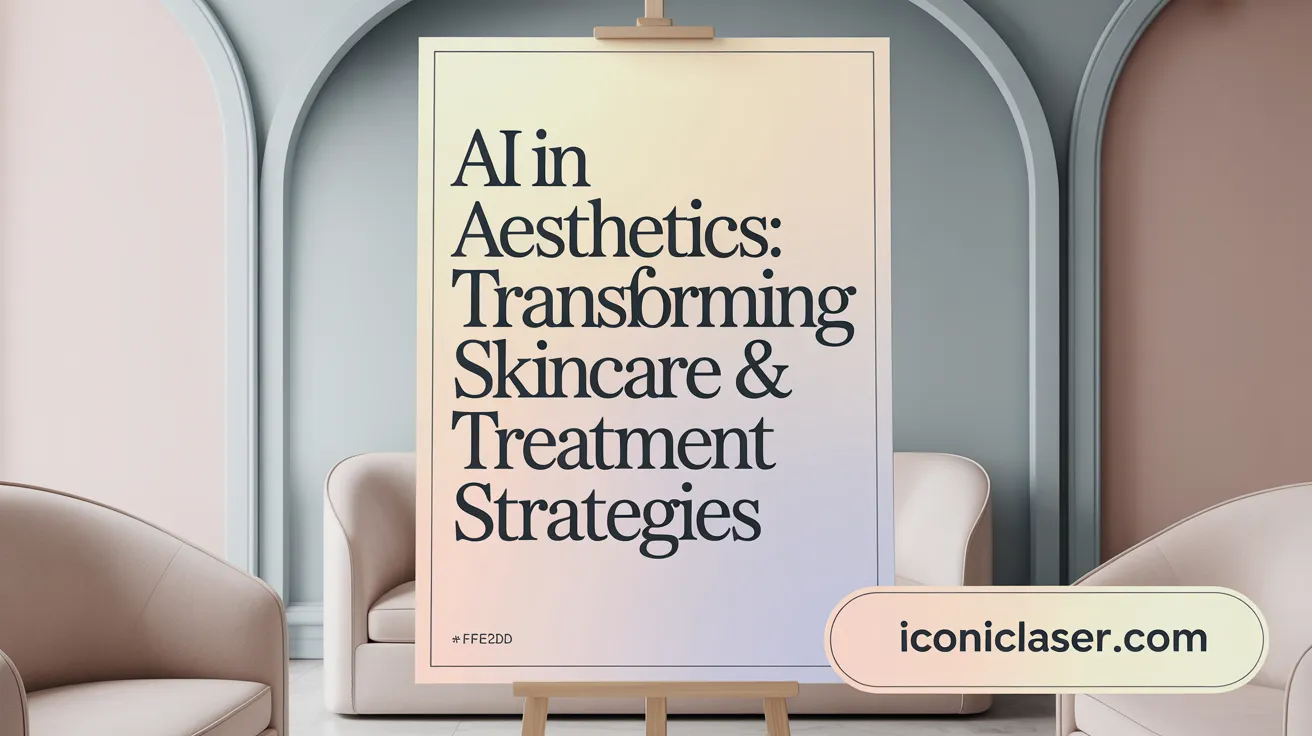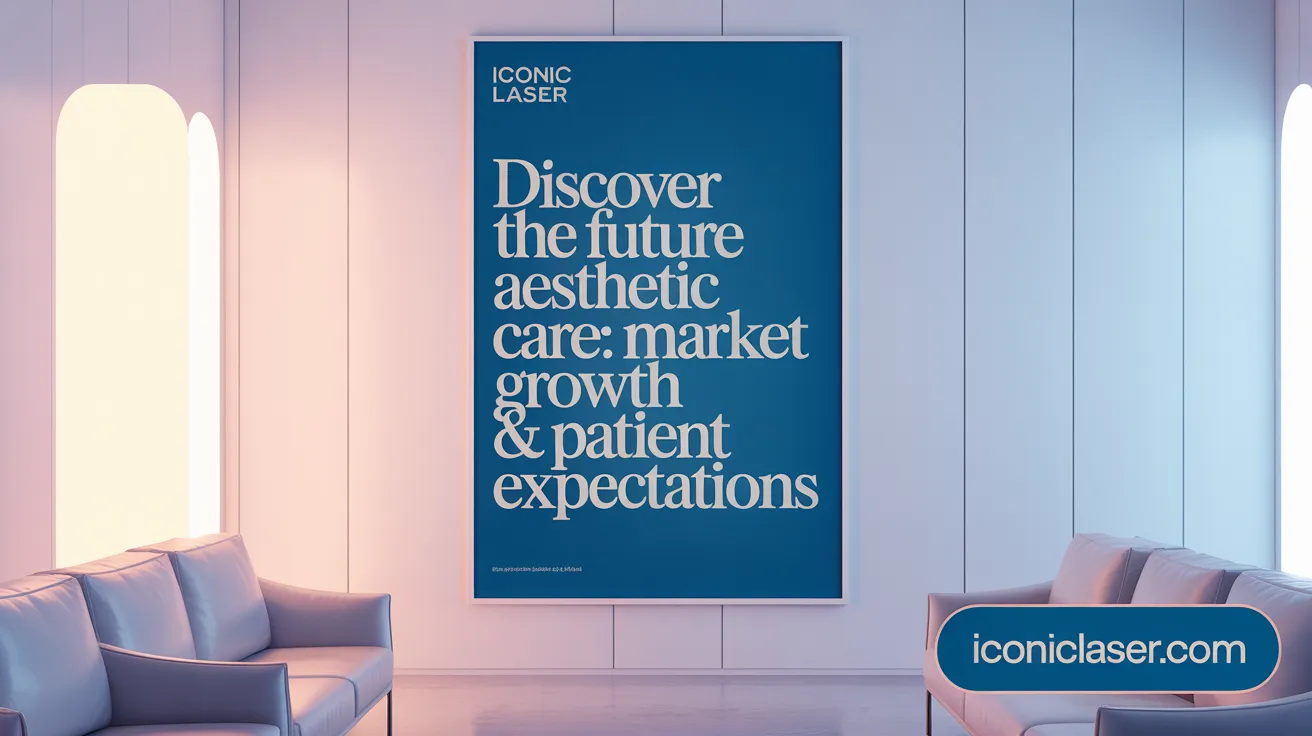Embracing a New Era in Aesthetic Medicine
Personalized aesthetic care, fueled by cutting-edge technology and an evolving understanding of individual needs, is transforming the beauty industry. This article explores the revolutionary trends and innovations redefining treatments to be more tailored, effective, and holistic, reflecting the diverse desires of modern patients.
From One-Size-Fits-All to Tailored Treatments: The Rise of Personalization

How is personalized care changing traditional dermatology and aesthetic treatments?
Personalized care is revolutionizing dermatology and aesthetic medicine by moving away from the traditional one-size-fits-all approach. Instead, modern practices focus on individualized treatment plans that consider each patient's lifestyle, diet, genetics, environmental exposure, and overall health. This shift enables more effective, long-term prevention strategies rather than simply addressing symptoms.
Individualized dermatology approaches
Contemporary dermatology integrates advances in technology such as AI-driven analysis and 3D imaging to customize skincare and medical treatments. These tools assess skin type, pigmentation, and even genetic predispositions to design precise care regimens. Moreover, patient engagement through platforms like Nextech's TouchMD fosters interactive communication, ensuring treatments align closely with patient needs and goals.
Customized aesthetic treatment plans
Aesthetic providers now emphasize bespoke treatment protocols that combine various modalities tailored to individual concerns. For example, Bespoke Rx offers personalized plans using Botox, fillers, microneedling, and laser therapies, curated through thorough consultations emphasizing transparency and long-term appearance goals. Incorporating AI and augmented reality technologies further allows patients to visualize outcomes, enhancing confidence and satisfaction.
Importance of patient engagement and communication
Effective personalized care hinges on strong provider-patient relationships and clear communication. Technologies such as telehealth and virtual consultations make care more accessible and responsive. Personalized marketing and data-driven insights help tailor not just treatments but also patient experiences, improving adherence and outcomes. This engagement transforms patients into active partners, promoting healthier skin and aesthetic results aligned with personal identities.
Overall, personalized dermatology and aesthetic treatments mark a significant advance by unlocking tailored, preventive, and patient-centered care that meets the evolving demands of modern consumers.
Technological Innovations Driving Personalized Aesthetic Experiences

What technologies are currently enabling personalized aesthetic care?
Modern aesthetic medicine has been transformed by a suite of advanced technologies enabling highly customized treatments. Key innovations include:
-
AI-powered diagnostics and algorithms: Artificial intelligence analyzes skin characteristics such as pigmentation, texture, hydration, and genetic factors to develop personalized treatment plans. AI systems also predict treatment outcomes and optimize protocols in real-time.
-
3D imaging and virtual simulations: These tools allow practitioners and patients to visualize potential results before treatment. 3D facial mapping and simulations enhance communication and decision-making.
-
Augmented reality (AR) for outcome visualization: AR platforms enable patients to see real-time, virtual representations of treatment effects on their appearance, boosting confidence and setting realistic expectations.
-
Advanced laser and energy-based devices (EBDs): Technologies like fractional CO2 lasers, radiofrequency microneedling, ultrasound devices (e.g., HIFU), and IPL offer customizable, precise skin rejuvenation and body contouring with minimal downtime.
By integrating these technologies, practitioners can deliver personalized care tailored to individuals’ unique skin profiles and aesthetic goals, enhancing treatment precision and patient satisfaction.
Artificial Intelligence: Transforming Skincare and Treatment Planning

How is AI revolutionizing personalized skincare and aesthetic treatments?
Artificial Intelligence (AI) is dramatically changing how skincare and aesthetic treatments are personalized. AI algorithms process both intrinsic factors, like skin type, pigmentation, and genetic predispositions, and extrinsic factors such as environmental exposure and lifestyle habits. This comprehensive analysis enables the creation of highly customized skincare regimens and aesthetic treatment plans tailored specifically to each individual. Learn more about the Artificial intelligence in personalized skincare and AI-powered skincare diagnostics.
AI-Driven Personalized Formulations and Predictive Analytics
Advanced AI platforms can formulate personalized skincare products by evaluating skin conditions and even analyzing product ingredients for compatibility with unique skin sensitivities. Many tools use deep learning and computer vision to monitor skin changes over time, allowing real-time adjustments to treatment approaches. Predictive analytics further optimize outcomes by forecasting how the skin will respond to different treatments, reducing risks and enhancing efficacy. For insights on these innovations, explore AI algorithms in skincare analysis and AI in aesthetic treatments.
Challenges in AI Applications
Despite its sophistication, AI integration in skincare and aesthetics faces challenges. Data privacy is a critical concern requiring stringent security protocols. Algorithmic bias is another issue, as AI must be trained on diverse datasets to serve all skin types effectively. Moreover, the industry continually works to ensure transparency and inclusivity, addressing potential disparities in AI-driven recommendations. Additional details on these challenges are discussed in Addressing biases in AI systems and Algorithmic bias in AI medicine.
AI-powered solutions are propelling personalized skincare and aesthetic medicine forward, offering precision and adaptability while demanding cautious and ethical deployment. For a comprehensive overview, see The Future of Personalized Dermatology and AI in Personalized Aesthetic Medicine.
Non-Invasive and Minimally Invasive Procedures: Demand and Innovations

Why are non-invasive procedures increasingly preferred in aesthetic medicine?
Non-invasive and minimally invasive treatments have surged in popularity because they offer convenience, minimal downtime, and lower risks compared to surgery. These procedures provide natural-looking results that appeal to a wide range of patients. For detailed insights, see Non-invasive aesthetic treatments.
Growth in non-surgical aesthetic treatments
The non-surgical aesthetic treatments market is rapidly expanding, with over 83% of aesthetic procedures being minimally invasive. This growth is driven by advancing technology, cultural acceptance, and patient demand for quicker, less risky interventions that deliver effective results. Learn more about medical aesthetics industry growth and aesthetics market growth.
Popular modalities
Key minimally invasive treatments include:
- Botox and neurotoxin injections: Widely used for wrinkle reduction with longer-lasting, subtle effects. Explore advances in Botox and dermal fillers and advancements in Botox.
- Dermal fillers: Enhanced formulations provide natural enhancements and treat volume loss. See injectable hyaluronic acid fillers advancements.
- CoolSculpting: A non-invasive fat reduction technique using fat freezing for natural elimination. Details on CoolSculpting fat reduction.
- Microneedling: Especially effective combined with radiofrequency (RF) or platelet-rich plasma (PRP) for collagen stimulation and skin rejuvenation. Learn about microneedling combined with RF and PRP therapy.
Emerging technologies for fat reduction and skin tightening
Innovative fat reduction methods, such as ultrasound-based approaches, complement popular options like CoolSculpting. Skin tightening has seen advances through radiofrequency and ultrasound devices like Thermage, Morpheus8, and HIFU, which offer results comparable to surgery without incisions. For further reading, see Non-invasive skin tightening and lifting methods and High-intensity focused ultrasound (HIFU).
These technologies allow patients to address diverse concerns such as skin laxity, texture irregularities, and localized fat with minimal discomfort and recovery time, fueling the trend towards personalized, natural aesthetic improvements.
Holistic and Inclusive Approaches: Integrating Wellness and Diversity
How are aesthetic practices incorporating holistic wellness and inclusivity?
Modern aesthetic medicine is evolving beyond simple cosmetic changes to embrace holistic wellness in aesthetic care. This means practitioners consider nutrition, stress management, and hormonal health as integral to skin and body care. Addressing these internal health factors helps optimize external treatment outcomes, encouraging overall well-being.
At the same time, gender-inclusive beauty trends and personalized aesthetic treatments by ethnicity and identity are becoming central. Practices now emphasize gender-inclusive treatments that celebrate all gender expressions rather than adhering to traditional binaries. They also develop customized procedures respecting diverse ethnic backgrounds, because skin types and aging patterns vary widely among populations.
Subtle and natural enhancements are preferred over dramatic changes, focusing on micro-tweakments that preserve authentic appearance and promote confidence without overt alteration. This approach aligns with the growing demand for treatments that enhance individuality rather than conform to one beauty standard, reflecting natural subtle enhancements and less is more aesthetic philosophy.
Regenerative medicine and bio-stimulation therapies play a large role in this holistic model. Techniques such as stem cell treatments, platelet-rich plasma (PRP), and exosome therapy stimulate the body’s own healing, collagen production, and cellular renewal. These therapies provide long-term rejuvenation with results that look natural and fresh.
Together, these trends signify a comprehensive, patient-centered philosophy in aesthetic care, combining scientific advances in regenerative medicine, personalized treatment plans, and holistic approaches in aesthetic medicine with respect for wellness and diversity to create personalized, ethical, and effective treatments.
The Expanding Market and Patient Expectations: Convenience and Transparency

Growth Statistics of the Aesthetics Market
The global aesthetics market growth is experiencing robust growth, expanding annually by approximately 7%. Non-invasive treatments, which accounted for 83% of all aesthetic procedures in recent years, are driving much of this rise. The non-invasive market alone is projected to reach $171.3 billion by 2030, reflecting strong consumer demand for safer, cost-effective options with minimal downtime.
Increased Acceptance of Non-Invasive Treatments
Patients show increased preference for minimally invasive procedures like Botox and dermal fillers, and laser skin resurfacing, which offer natural results and convenience. The rising cultural acceptance and technological advances such as AI and advanced laser devices have made these procedures more appealing across diverse demographics, including men and younger clients.
Demand for Personalized Marketing and Patient Engagement
Modern consumers expect highly personalized experiences. This includes tailored marketing efforts, customized treatment plans, virtual consultations enhanced by augmented reality, and on-demand access to services. Platforms like Nextech's TouchMD improve doctor-patient communication and engagement by visualizing outcomes and creating data-driven, patient-centered care.
Importance of Data Security and Transparency
With personal data becoming central to treatment customization, data security is paramount. Practices employ encrypted storage and HIPAA-compliant platforms to protect sensitive patient information. Transparency in pricing and treatment goals also cultivates trust and patient loyalty, critical components for sustaining growth in an increasingly competitive market.
In summary, the current trends in personalized aesthetics emphasize a market that is growing strongly while patient expectations revolve around convenience, custom care, and ethical data handling, shaping the future of the industry.
Future Horizons: Metaverse, Robotics, and Ethical Innovations
What emerging trends are shaping the future of personalized aesthetic care?
The future of personalized aesthetic treatments is being transformed by cutting-edge technologies and a renewed focus on ethical practices. Virtual "meta-clinics," powered by metaverse platforms, enable remote consultations and immersive patient-practitioner interactions, broadening access and convenience in aesthetic care.
Robotic assistance in aesthetic surgery brings increased precision and reduced human error to procedures such as hair transplantation, liposuction, and reconstructive surgeries. Devices like the ARTAS Robotic System exemplify this trend, providing minimally invasive options with improved outcomes.
Ethical considerations are becoming paramount in aesthetic medicine. Enhanced regulations aim to prevent overtreatment and ensure that results remain natural and safe. Practices increasingly adopt sustainable approaches by using eco-friendly products, advocating cruelty-free brands, and emphasizing transparency in sourcing and patient communication.
Together, these innovations foster a future where treatments are not only highly personalized but also safe, ethical, and environmentally conscious. The integration of AI, robotics, and metaverse technologies, combined with holistic wellness strategies, promises to redefine patient experience and treatment efficacy in the coming years.
A Transformative Path Forward in Personalized Aesthetic Care
Personalized aesthetic care, powered by transformative technologies like artificial intelligence, advanced imaging, and regenerative medicine, is reshaping the industry towards more precise, natural, and holistic treatments. The growing demand for minimally invasive procedures combined with inclusive and wellness-oriented approaches reflects a profound shift that respects individual diversity and expectations. As innovations such as virtual consultations, robotic assistance, and ethical standards evolve, the future of aesthetic medicine promises safer, more transparent, and deeply personalized patient experiences that celebrate authentic beauty and long-term skin health.
